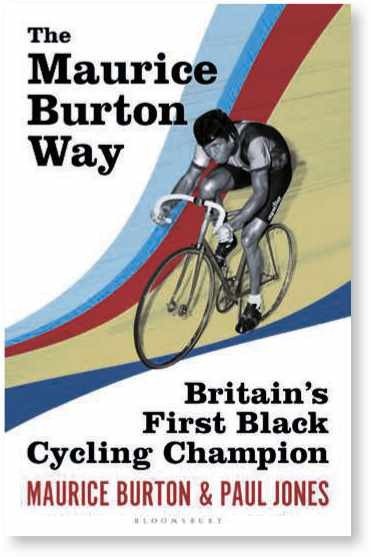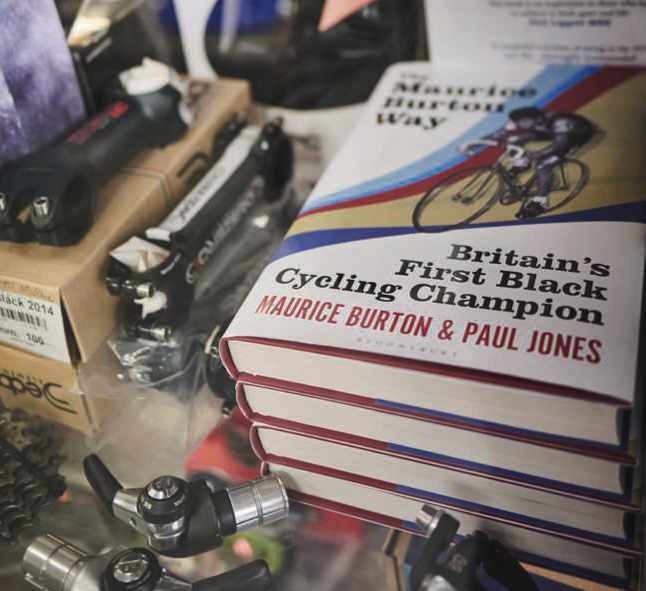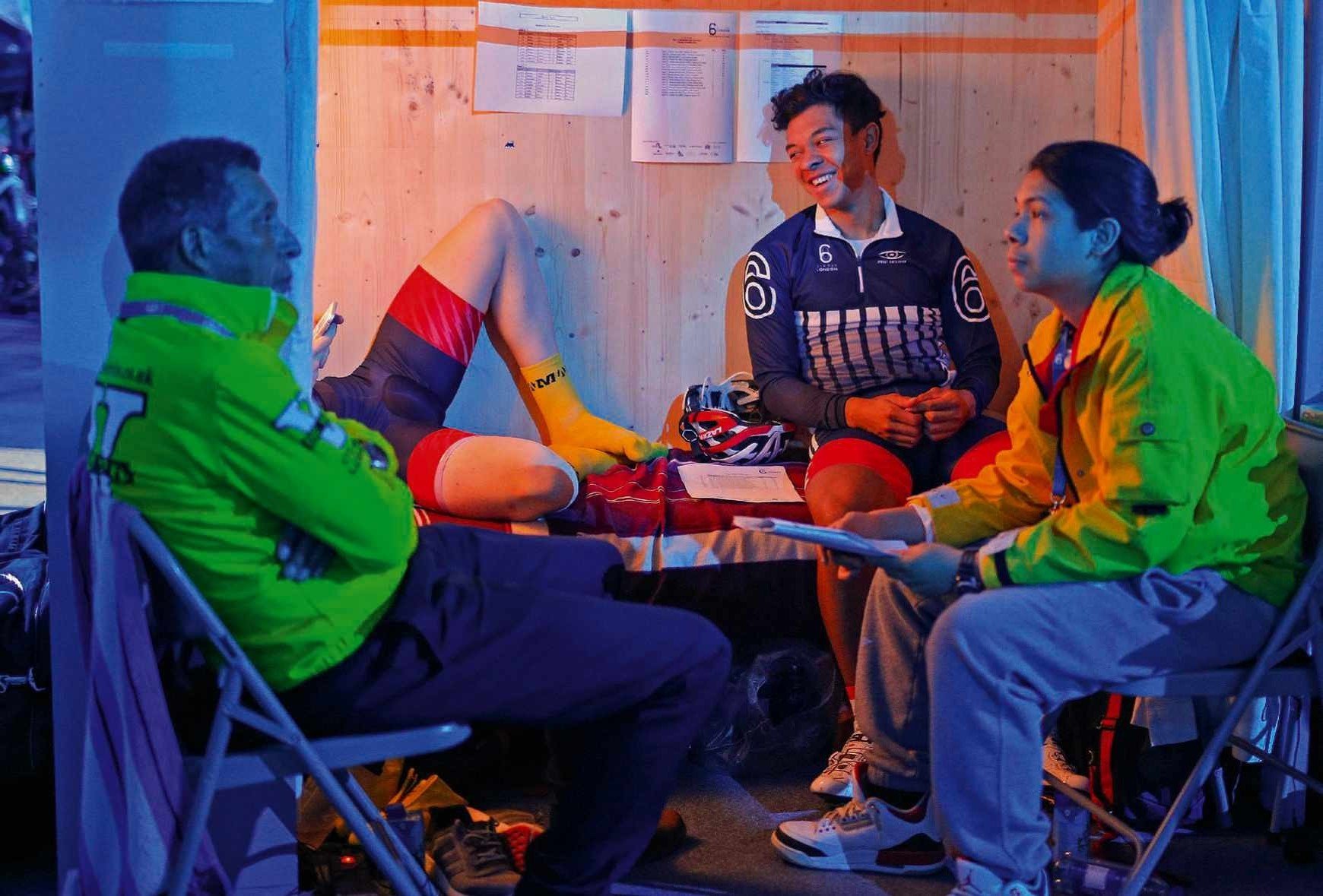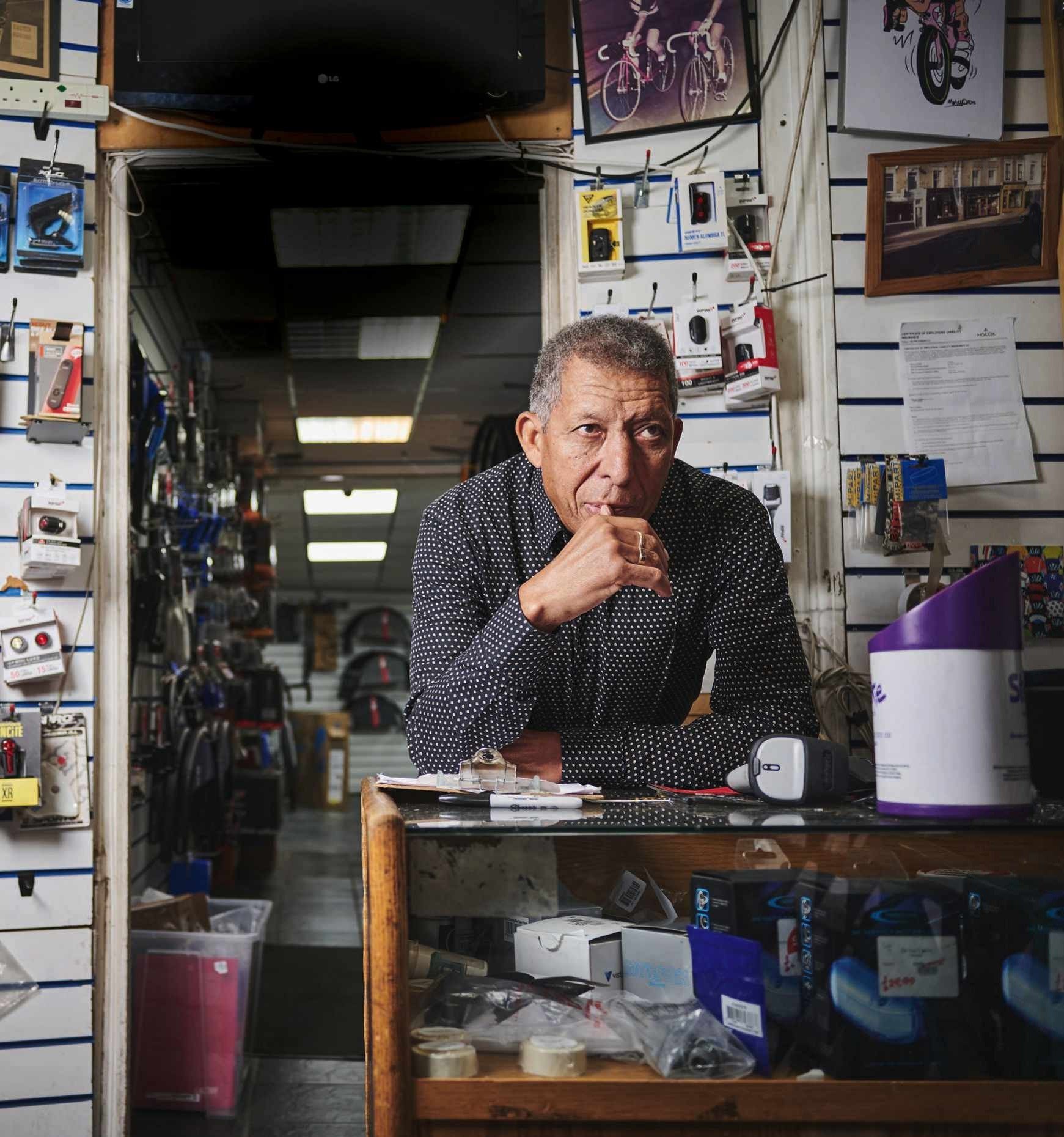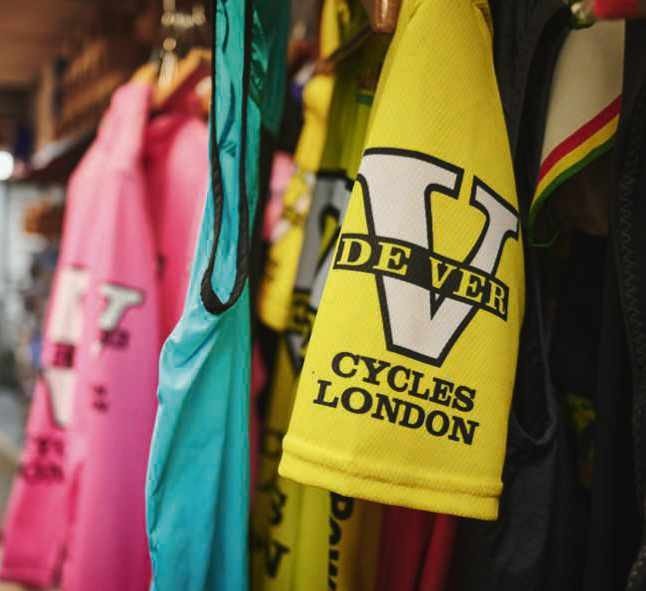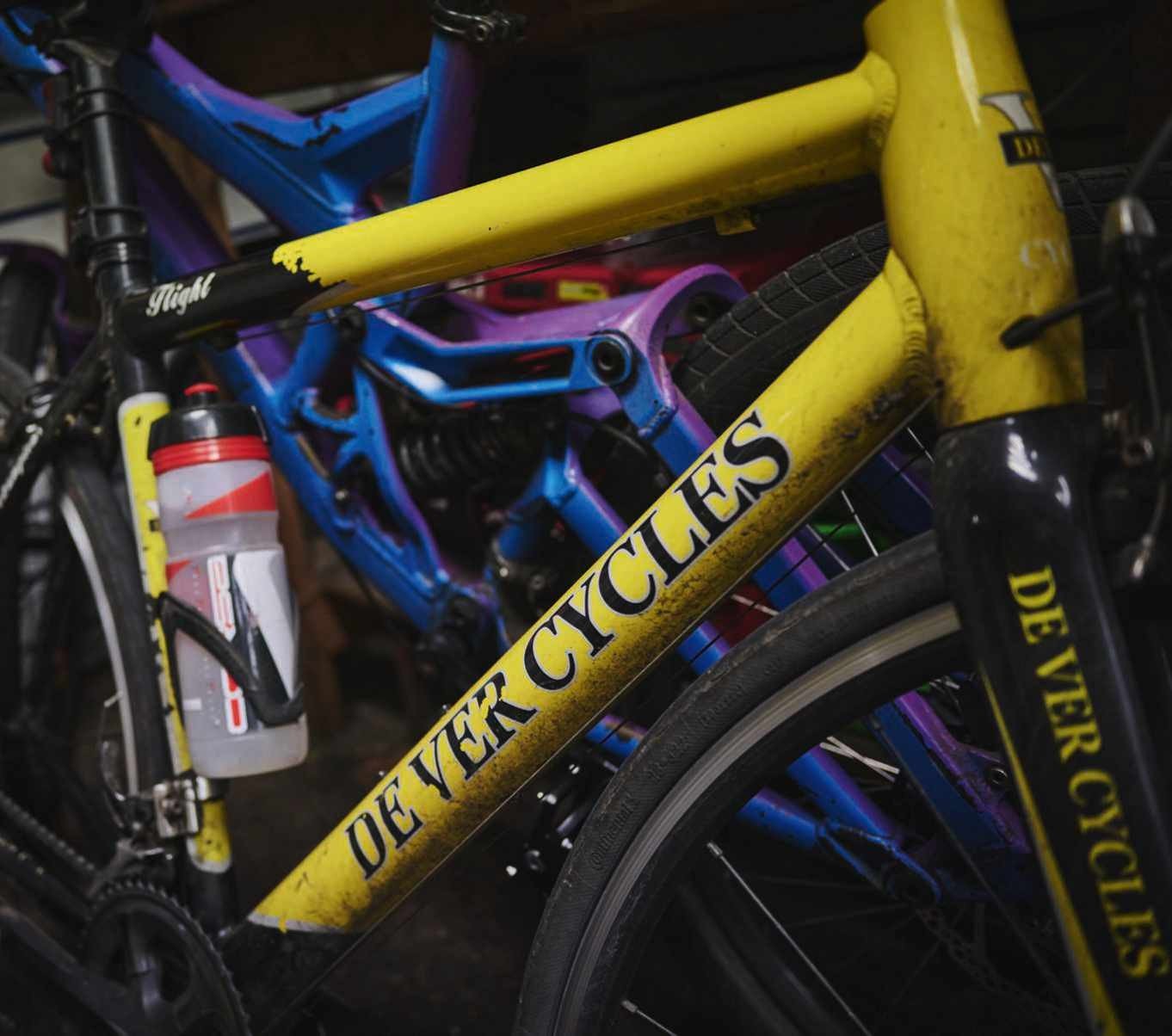Days of thunder
Champion cyclist Maurice Burton battled racism to compete in the Six Days of Ghent, the pinnacle of track racing in the 1970s. To promote his new authorised biography, he speaks to us about this wild era on the boards
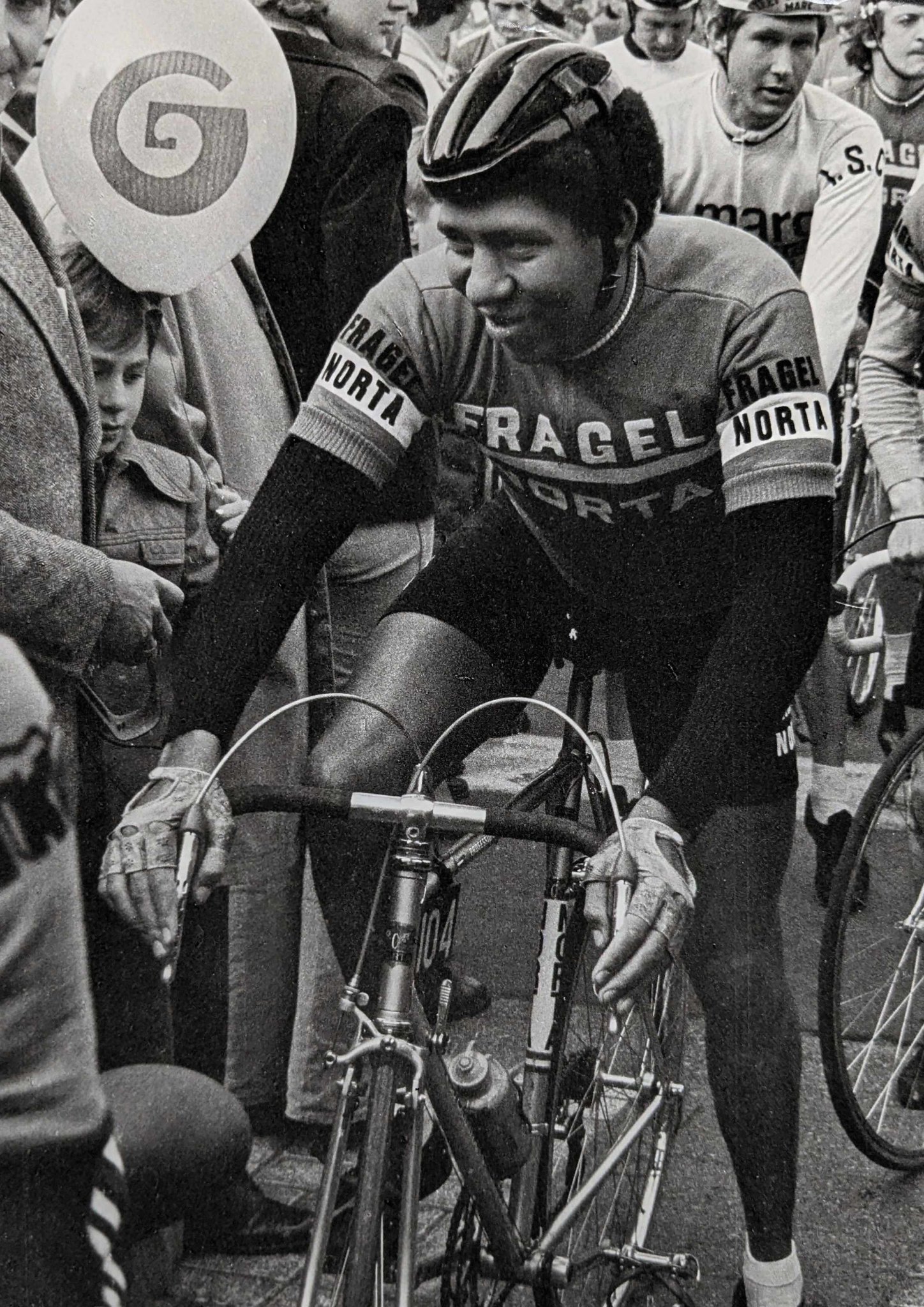
Early last year, Maurice Burton was inducted into the British Cycling Hall of Fame. The 68-year-old Londoner joined just 68 others, who’d made “an outstanding contribution to cycling across all levels and disciplines”. Over the phone from his holiday home in Lanzarote, where he’s often to be found when not in his south-London bike shop De Ver Cycles, Burton tells me he was humbled by the accolade. “They asked me if I wanted to accept it and, of course, I did,” says Burton. “But I did feel when I looked at some of the other people in it, the likes of say, Tom Simpson [Britain’s first road world champion], and… I mean, I did okay as a rider but I didn’t do anything that was on the level of someone like him.”
He’s being too modest, so I remind him of his own quote from the newly released book, The Maurice Burton Way, where he tells Paul Jones, his collaborator, that “everyone has to fight to get what they want, but they didn’t have to fight the same fight as me”. This prod leads to a necessary qualification. “It’s true… things were different for me back then. They had doors open for them, not just in cycling but in life in general.”
The ‘they’ refers to the white bike riders from Burton’s racing career in the 1970s and early ’80s, which is to say almost everyone else he came up against. Little has changed, you might observe – cycling remains a glaringly white sport. British culture and attitudes, however, have, thankfully, evolved. Racism and prejudice do remain stubbornly present though – you don’t have to spend too long on social media to realise that – but what Burton endured throughout his racing career, whether from the British Cycling Federation, fellow riders, the media or fans, as documented extensively in the book, is particularly shocking through the lens of 2024. Perhaps the most notorious incident was at the 1974 British National Track Championships, where Burton won his first senior amateur title, aged 18, in the 20km scratch race. On the podium, in his moment of glory, he was booed by the crowd. What should have been a defining event in his young career was remembered for all the wrong reasons. “They didn’t like the colour of my skin. That’s what I think,” says Burton in the book. It was a catalyst for Burton turning away from British racing and forging a career as a pro in Belgium.
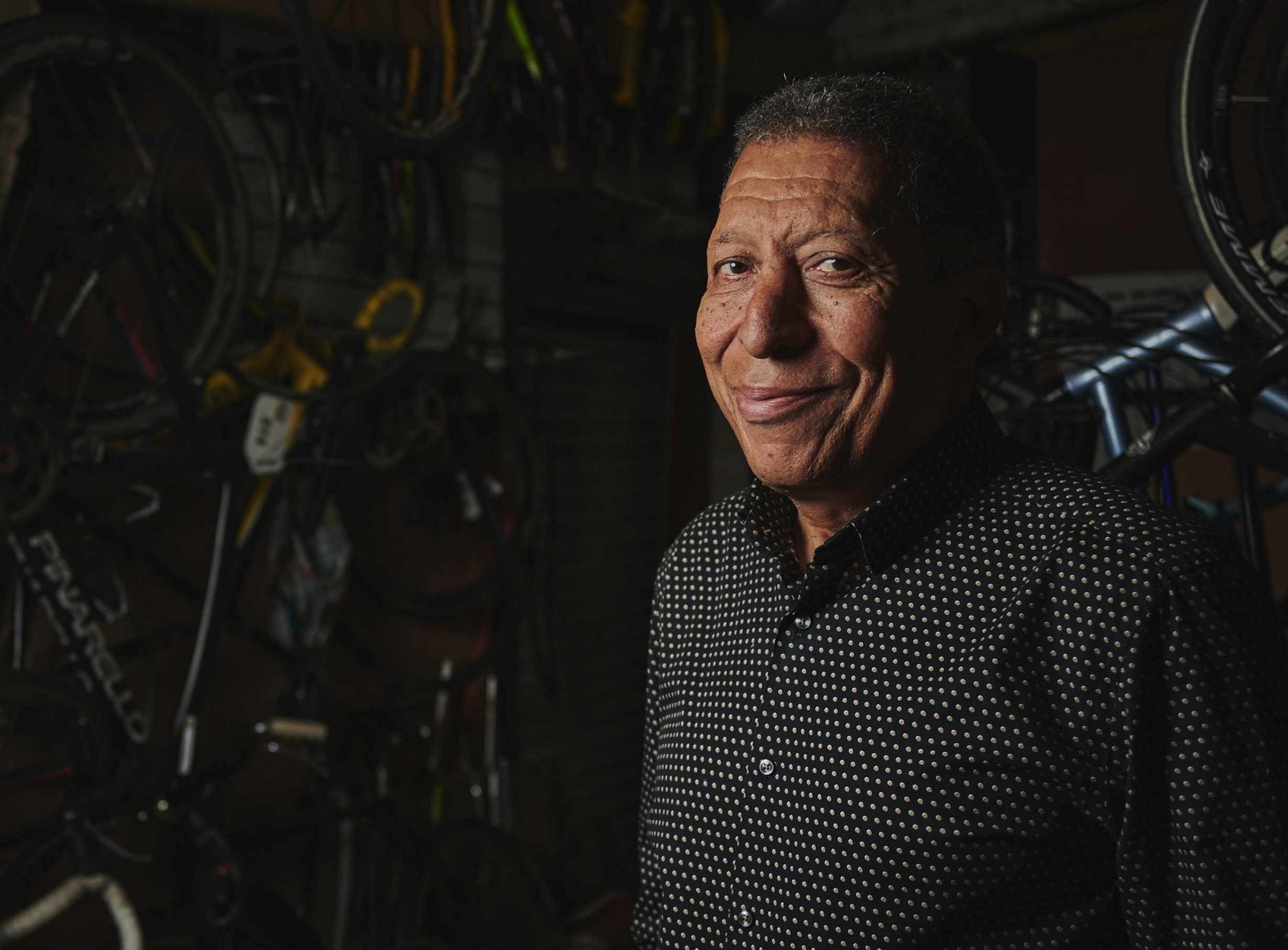
“ IT’S TRUE, THINGS WERE DIFFERENT FOR ME BACK THEN. THEY HAD DOORS OPEN FOR THEM, NOT JUST IN CYCLING BUT IN LIFE IN GENERAL ”

The joy of Six
As a track rider of that era, the ultimate career plan involved becoming a regular on the Six Day circuit. This racing format originated in London in the late 19th Century, and was popularised in the USA in the early 20th, continuing to burn brightly in Europe (and in particularly Belgium) in the 1970s and ’80s. Burton would eventually race against the likes of Eddy Merckx, who once asked Burton to gift him a race. In a fairly common ‘you scratch my back, I’ll scratch yours’ sort of deal, Burton was delighted to oblige the greatest rider of all time.
The Six Day format involved an inordinate volume of high-intensity racing, across different formats, six days a week, in teams of two. In Burton’s era, the circuit was a carnival of excess. An excess of racing, travelling and, of course, drug use. Drugs to stay awake and drugs to get to sleep. Burton speaks of a round-the-clock circus of activity in smoke-filled velodromes, where he’d often sleep over at the velodrome and not see daylight until the six days were up. For the main event, they’d ride nightly from 8pm till 4am, then they’d be back on the boards at midday “mostly for the old people, then we’d have the children’s matinee in the afternoon.” Six Days, admits Burton, were a combination of “athletic performance and showmanship.”
If results weren’t necessarily fixed, consideration had to be paid to both prolonging the jeopardy at the top of the leaderboard and giving the local crowd, wherever you were in Europe, a chance to cheer their home heroes. He recalls a Dutch rider, Herman Ponsteen, at the Six Days of Milan. “He was a very good rider, second in the pursuit at the Olympics in 1976, and here in Milan he kept winning the sprints. I said to him, ‘you keep on doing that and you won’t be coming back next year. They didn’t bring you here to beat the Italians. You’re here to make them look good’.”
Life as a Six Day rider was a precarious existence. “You were only ever as good as your last Six Day,” says Burton. It was a gig economy, albeit a very good gig when the ‘contracts’ – handed out by agents, which mostly meant a chap called Jan Dirksen, a Mr 10% who handled 95% of the riders – were doled out. “Wherever the Six Day was, Dirksen would come to the last couple of days with his briefcase of contracts.” From a Six Day outing, of which Burton competed in 56 through his career (six in Ghent), never winning but playing his part, Burton would earn £2,000 a week, though he’d have overheads such as paying for his staff, such as soigneurs. In today’s money it would be around £10,000. Really good money, I suggest. “Yeah, well, I don’t know. Not so bad. But I’d dare say the likes of Merckx got paid quite a bit more. I’m actually going for dinner with Roman Hermann later; he’s also got a place out here. After he finished racing, he promoted a Six Day in Stuttgart and he told me Erik Zabel [German six-time Tour de France green jersey winner between 1996 and 2001] would get 200,000 Euro a week!”
“I ONCE READ THAT THERE WERE TWO PROFESSIONS IN BELGIUM THAT WERE LOOKED UPON HIGHLY: THE PRIESTHOOD AND A PRO CYCLIST”

Burton’s exile in Belgium was hardly an escape from the racism he experienced in Britain. He talks in the book about being called names by fellow riders, and having dangerous tricks played on him, such as having his bottom bracket tightened. He could, however, as a person of colour, forge a career in Belgium, even if the intentions of his employers weren’t entirely noble. “I was something of an attraction, because I was different, because I was the Black guy,” he says in the book. He still needed the talent to race though. “If they put you in the race and you come in 100 laps down then that’s not going to work. The thing is, I could do it, and they knew that, but it really wasn’t easy to get in, not at all; being Black helped me get in, while holding me back.”
Drug use was prevalent in this era. Before the pharmacological excesses of the EPO era, the go-to substances of Six Day racing in Burton’s era were stimulants, from caffeine up to amphetamines. In the book, Burton admits taking things to help him keep going and reveals a shame about doing so that he carries to this day. In our call, he recalls that he’d be approached by parents of children asking if he had something to help them go faster, and says that riders from back then who deny it are kidding themselves. “Let’s live in the real world!” He also says that it wasn’t until he became professional that he took anything; if you had to do it as amateur, he believes, then there was no way you’d survive in the pro world. Typically, he says, the final day of a Six was when you would use something. “Not for the racing, but for after the race, because we had to get straight in the car and drive through the night to the next race.” Different times, these clearly were.
One track mind
In Burton’s era, all roads led to the Six Days of Ghent – the biggest meet of the season. They still do and it still is. The Six Day calendar in 2024, however, is a shadow of what it used to be in the 1970s and a reason for that, Burton believes, is the increased access to riders of today, in the media, on television and via social media. “Back then, in Milan, say, you’d have fans standing all night to get close to the riders: they were fascinated by them. A lot of that mystique is gone now. You think back to even before my time to riders like [Fausto] Coppi: they weren’t seen as quite human, they were like demigods.
“I think it’s also missing the top riders, like [Wout] van Aert or [Mathieu] van der Poel. Sure, we’ve seen Mark Cavendish team up with Bradley Wiggins [at Ghent in 2016] but it’s just two of them. You used to see all the top riders.”
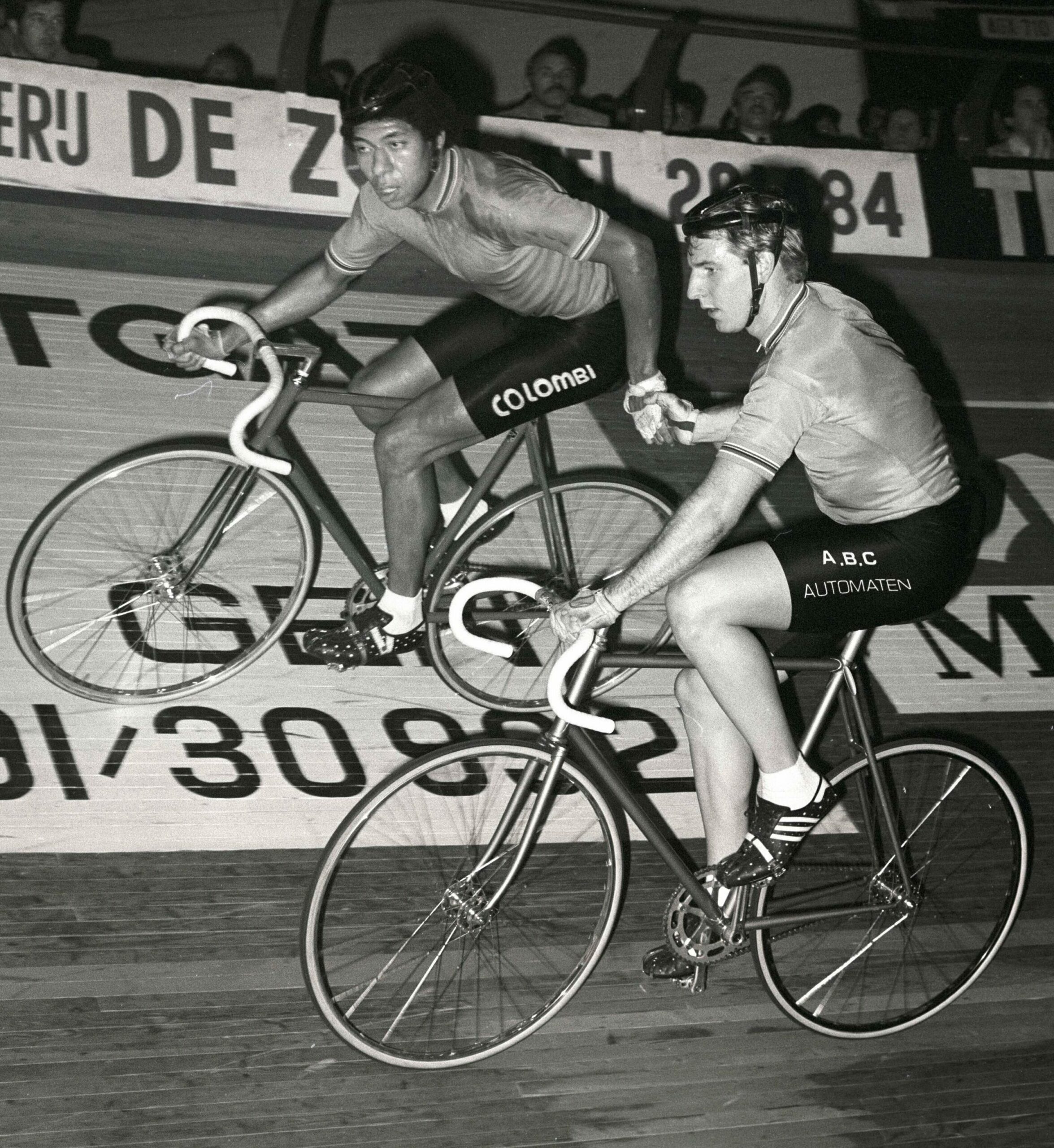
Despite the collapse in the profile and calendar of the Six, the meet in Ghent remains a huge draw. “I once read that there were two professions in Belgium that were looked upon highly,” says Burton. “One was the priesthood and the other was a cyclist. Cycling is ingrained into the whole culture, and Ghent is the heartland.” He recalls Belgian road races in the summer, which he’d use for Six training ahead of winter, to illustrate the public obsession. “There’d be no changing rooms at the race, so you’d go knocking on doors. Sometimes you’d go inside, sometimes the garage. Occasionally there’d be five people in the garage with a bucket of water and soap, all washing themselves down. A lot of people would let you in, because they could tell their friends that they’d had the winner in their house.”
His last race in Ghent was 1983, shortly before a career-ending crash at the Buenos Aires Six, and he didn’t return until 2015, when British Cycling paid his expenses to support his son, Germain, who was racing in the U23 event. Then there was that trip the following year to see Cavendish and Wiggins win in the latter’s final year as a pro. “I was there when Bradley won the Tour and I wanted to be there when he rode his last Six in Ghent. I rode with his dad, Gary, and have known Bradley since he was two weeks old.”
“IF THERE’S A REASON TO GO, I GO, BUT YOU CAN’T LIVE IN THE PAST. IT WAS A GREAT TIME, BUT TO GO BACK AND SEE IT CAN BE EMOTIONAL”
Explaining his reason for seldom returning to Ghent’s velodrome, ’t Kuipke, the scene of what used to be his biggest week of the racing year, he says he’s not one to indulge in nostalgia. “If there’s a reason to go, I go, but you can’t live in the past. It was a great time, but to go back and see it can be emotional.”
In the book, Burton describes himself as being business-like in the way he operated as a racer; as long as he and his staff were paid, he’d ride with anyone. Was this innate to his character, or how the dog-eat-dog Six circuit shaped him? He leans more to the former. “I started riding bikes at 12, and raced from 15. I had to fix the bike myself because I couldn’t afford anything else. I’d sell bikes to other kids at school, then do advertising in the Exchange & Mart.” He also sold a bike in part exchange for a car, to get him across to Belgium for the first time. “I was 19, so I’ve always been business minded.”
Heart of the matter
It would serve him well after his racing career, which ended in 1984, before his 30th birthday, with that crash in Argentina that broke his femur. Like many sportspeople, he struggled with his career ending at such a young age. Initially jumping onto the burgeoning bike-courier boom in the 1980s, he took over De Ver Cycles in Streatham, London – the bike shop he still owns and runs today. Like any independent bike shop owner, he’s had huge ups and downs with the shop through the years. He sold vast stock during the pandemic, for instance, and these periods help to counter leaner times.
He continues to ride, barring injury, every day, for the enjoyment and, he says, to keep the heart arrhythmia at bay that rears its head during any period off the bike. “I’ve got a large heart from racing. The worst thing somebody like me can do is stop exercising,” he says.
That riding has taken him to places that his pro career, largely confined to the boards and cobblestone roads of Belgium, couldn’t: tours across Europe, training camps in Lanzarote with his own London club, Team De Ver, and numerous Étapes du Tour and Marmottes in the French Alps. “I never rode the Tour de France but [as a kid] I remember seeing a photo of Coppi high on the Galibier. I wanted to know what it felt like to ride these climbs.”
The days of pushing himself in these events, he says, is over, though he still has his eye on the Passo dello Stelvio, Italy’s most renowned mountain pass. He’s planning on taking a trip to Italian frame builder and friend Luigi Daccordi to collect a custom-made ebike designed for his wife, Mia.
We’ve been chatting for 90 minutes and this raconteur has racked up over 10,000 words on my transcript. A previously focused conversation has lapsed into the minutiae of bikes – the “nightmare” of tubular tyres, the absence of a Lanzarote Campagnolo dealer for his beloved Bianchi – and he’s got an appointment elsewhere to keep, so it’s time to go. A sandstorm continues to blow outside his home and the enforced time off the bike is making him twitchy.
Burton may have made his name going round in circles, but having jumped barriers that would have felled many others, he’s proven his real talent is for moving forwards in his own way.
